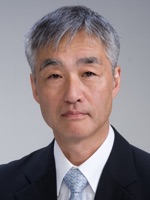第71回 日本食道学会学術集会 – The 71st Annual Meeting of the Japan Esophageal Society 【会期】2017年6月15日(木)・16日(金)/ 平成29年度日本食道学会教育セミナー ※2017年6月14日(水)【会場】軽井沢プリンスホテル(〒389-0193 長野県北佐久郡軽井沢町軽井沢)【会長】小山 恒男(JA長野厚生連 佐久医療センター 内視鏡内科) – 進む勇気と退く沈勇
Greetings from the President
The 71st Annual Meeting of the Japan Esophageal Society
President Tsuneo Oyama, M.D., Ph.D
Director of Endoscopy,
Saku Central Hospital Advanced Care Center

It is my great honor to be responsible for the 71st Annual Meeting of the Japan Esophageal Society, an institution with a long tradition, which will be held at the Karuizawa Prince Hotel on June 14–16, 2017. Although it is our mission to battle against the intractable diseases of the esophagus that confront us, sometimes, having made a dispassionate judgment of the situation, we must have the courage to withdraw. We have therefore chosen “The boldness to forge ahead, and the calm courage to retreat” as the main theme of the meeting.
After graduating from Shiga University of Medical Science in 1985, I undertook my clinical residency at Saku Central Hospital with the aim of becoming a general doctor, and in the fall of my fourth year after qualifying I was sent to become the only doctor managing a National Health Insurance Clinic in a town with a population of 6,000. In the morning I might see patients with hypertension and diabetes, or someone who had been injured when their foot was trodden on by a cow; I was running every sort of outpatient clinic, and making home visits in the afternoons. Every day I would examine four or five patients in their homes, which gave me the chance to chat to elderly people and their families. I was astonished. Even though they were all senior citizens aged over 80, they all wanted me to cure their diseases. I realized that I had to become a specialist. I asked Dr. Toshikazu Wakatsuki, the director of the hospital at that time, and was offered the chance to go and study for a year.
More than anything else, I wanted to study under a good mentor. When I asked Professor Hidenobu Watanabe of the First Department of Pathology of Niigata University to accept me as a student in our first conversation, he unhesitatingly took me on. As this one year was my only chance to study, I worked harder than I ever had for my entrance examinations or in preparation for the national medical licensing test.
At the time I returned to Saku Central Hospital in 1992, endoscopic mucosal resection (EMR) for gastric cancer was just coming into vogue, and esophageal EMR had barely started. The surgical resection specimens I had studied in the pathology department had all been resected en bloc. All the EMR specimens, however, had been removed by fractional resection, and the diagnostics I had so painstakingly studied were of no use. I wanted to be able to cut out big pieces all at once. After much trial and error, in 2000 I succeeded in carrying out the first ever esophageal endoscopic submucosal dissection, using a hand-made hook knife.
Professor Harushi Udagawa, the president of the 70th Annual Meeting, chose “Invitation to Symphony of Esophagology” as the theme of that meeting, emphasizing the enjoyable nature of esophagology. Even in the countryside, if we collaborate little by little and build on our results, we can develop new methods of treatment. I hope that at this meeting we will be able to focus on the actual clinical medicine that is practiced in rural areas, with adaptations as required. I look forward to your advice and guidance.
Copyright © The 71st Annual Meeting of the Japan Esophageal Society. All Rights Reserved.